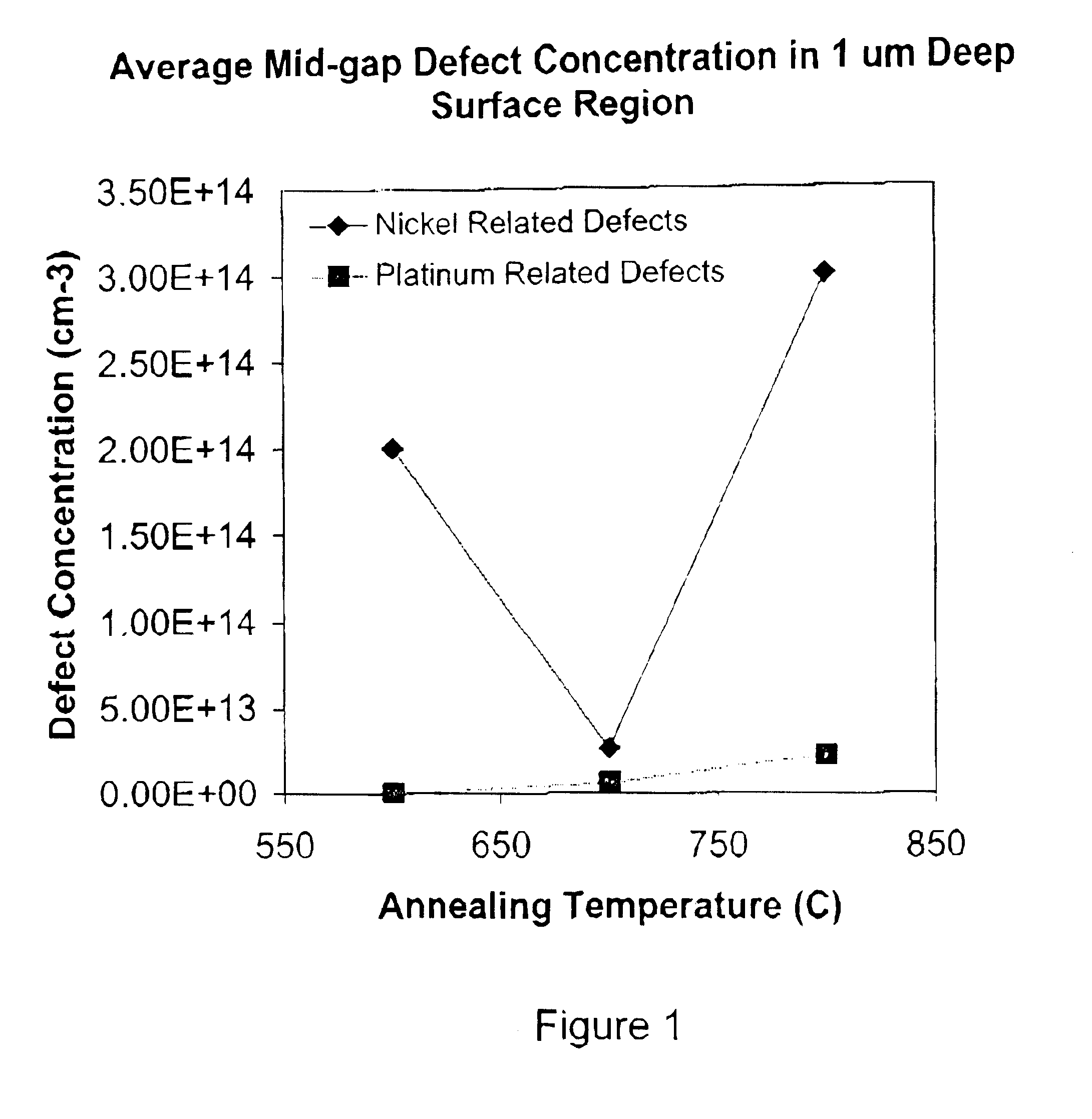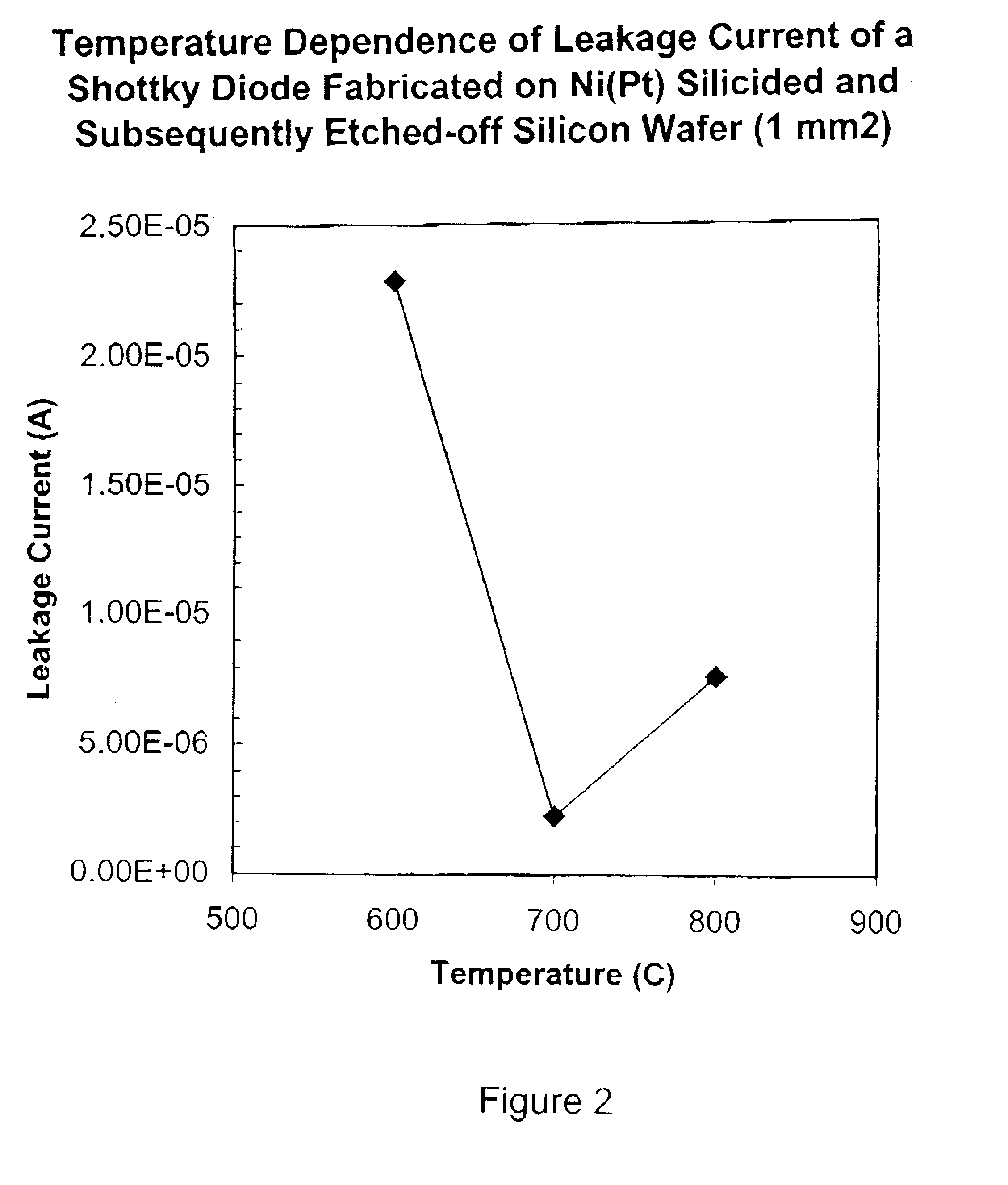Method of fabricating a nickel/platinum monsilicide film
a nickel-platinum monosilicide and film technology, applied in the direction of basic electric elements, electrical equipment, semiconductor devices, etc., can solve the problems of high sheet resistance and substantial drawbacks of titanium silicide layers (titanium disilicides) when using narrow line widths, and achieve low leakage current, high solubility of silicon, and diffuse very quickly
- Summary
- Abstract
- Description
- Claims
- Application Information
AI Technical Summary
Benefits of technology
Problems solved by technology
Method used
Image
Examples
Embodiment Construction
Referring to FIG. 3, a silicon semiconductor structure 1 comprises, inter alia, a surface having silicon regions 2 (i.e. source / drain regions) and adjacent insulating regions 3. Turning now to FIG. 4, a layer comprising nickel and platinum is deposited as a blanket film 4 over the silicon regions 2 and the adjacent insulating regions 3 of the silicon semiconductor structure, using a conventional deposition process. The resultant nickel / platinum layer 4 has a 95% nickel content and a 5% platinum content. The film 4 may include other elements such as, for example, titanium.
The silicon semiconductor structure 1 and the nickel / platinum layer 4 are then subjected to high temperature rapid thermal annealing to form a nickel-platinum monosilicide 5 on the silicon regions 2 as shown in FIG. 5. The annealing takes place in a nitrogen atmosphere at a temperature of 700.degree. C. The annealing process takes 60 seconds.
After annealing, any excess nickel / platinum film 4 on top of the insulating...
PUM
 Login to View More
Login to View More Abstract
Description
Claims
Application Information
 Login to View More
Login to View More - R&D
- Intellectual Property
- Life Sciences
- Materials
- Tech Scout
- Unparalleled Data Quality
- Higher Quality Content
- 60% Fewer Hallucinations
Browse by: Latest US Patents, China's latest patents, Technical Efficacy Thesaurus, Application Domain, Technology Topic, Popular Technical Reports.
© 2025 PatSnap. All rights reserved.Legal|Privacy policy|Modern Slavery Act Transparency Statement|Sitemap|About US| Contact US: help@patsnap.com



